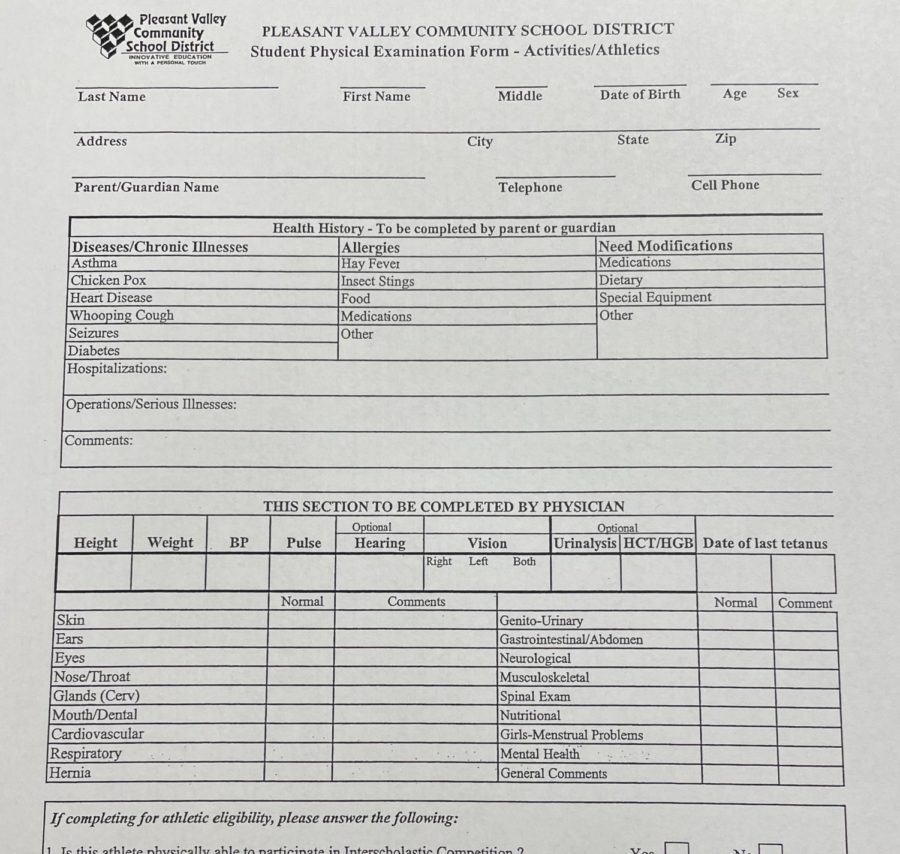1 in 50,000 high school athletes die of a cardiovascular condition each year. And about 1 in 4 babies are born with congenital heart defects. These statistics are increasing every year, and are often being overlooked, causing underlying defects in athletes.
In response to these rising rates of cardiovascular problems, Iowa senator Waylon Brown recently expressed his intentions to identify underlying cardiovascular issues among young athletes. As of today, college and professional athletes are to go through a cardiac evaluation prior to their season, but high school athletes are disregarded in this process. This is concerning because high school training is just as rigorous as college.
The proposed Senate file 87 states that student athletes in high school must have a heart evaluation performed by a doctor before participating in high school athletics. Through this assessment, high school athletes can be assured and notified about any cardiac issues before they take the field.
As of now, a physical examination includes taking a patient’s height and weight, blood pressure, heart rate and body temperature at the time of the examination.Throat, ears, nose, and eye exams are also required, as well as a full body observation. During the examination, any care provider is to search for irregular signs pointing to potential health issues.
Because there has been a noticeable increase in issues concerning the cardiovascular system, especially in younger athletes, health care workers observing athletes’ injuries have shown their concern towards cardiac difficulties.
PVHS lifting coach Brett Alhgren understands the importance of protecting athletes’ wellness. “I think it’s a great idea in theory since the point of a physical is to protect athletes, but it will be interesting to see how they implement it in funding and getting qualified people to help give these athletes the cardiac evaluation during physical examinations,” Alhgren said.
Currently, athletes are not required to be tested for any underlying heart conditions before hitting the court, track, field or pitch. Some heart conditions have no symptoms, therefore, without a heart exam, an athletes’ can easily be overlooked.
Although implementing Senate file 87 into high school athletics physical exams may seem like it has no drawbacks, the underlying issue of funding needs to be taken into consideration.
Athletic trainer and past President of the Iowa Athletic Trainers Society (IATS), Jason Veil, has been following the development of this bill . “While the general premise behind the bill is a great one and one that we feel is meant to help all athletes the issue comes from the access to and cost of the heart screens,” Viel continued. “We have serious concerns that most of Iowa’s youth athletes aline in rural areas where access to heart screens such as proposed in the bill will make it hard for them to receive the screen and therefore not be eligible to participate because they do not have the screen done.”
Rural schools’ access to hospitals and healthcare for athletes’ is a prominent issue in the world of high school sports. Rural high schools reported that there is a 50 percent more likely chance to have a sports related concussion. If that percentage is just pertaining towards concussions, what’s to say cardiovascular problems don’t have an even greater percentage?
Schools located in urban areas have better health care options. Located near hospitals, travel time is lesser compared to rural schools. There are more opportunities concerning health care options for urban high schools that rural high schools are not given. And this bill isn’t considering the rural high schools located in Iowa.
Lots of questions pertaining to the development of the bill have been brought up. Some of which Viel pointed out. Viel continued, “Who is funding this? Are parents now expected to pay for a heart screen along with the physical?” Since there are many rural schools in Iowa who may not be able to fund cardiovascular equipment that is needed.
As the Senate file 87 proposes a solution to the issue of rising cardiovascular problems among athletes, these are lurking questions that have yet to be answered.
This story was originally published on Spartan Shield on March 6, 2023.




































